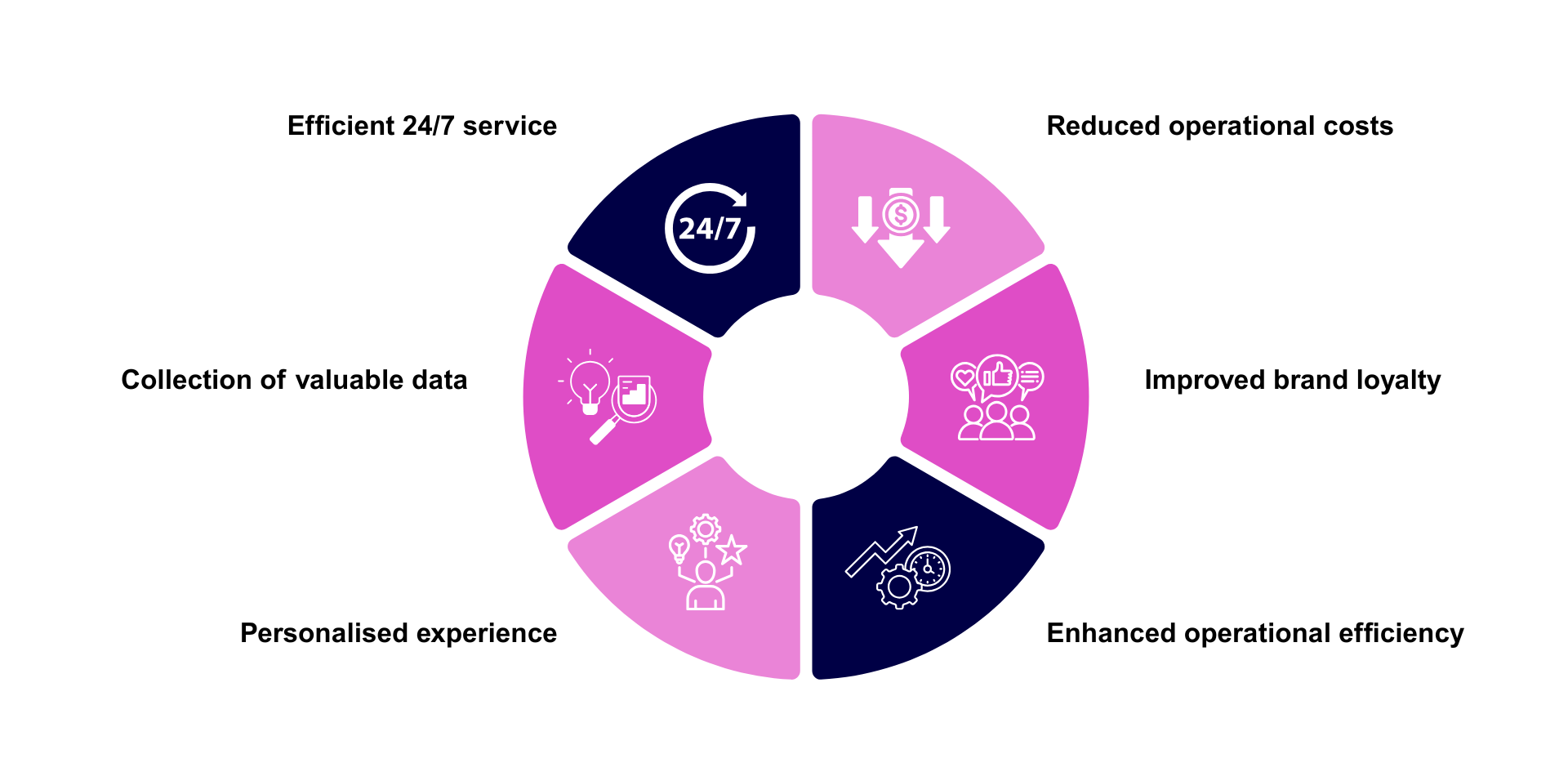Definition
A chatbot can be simply defined as “a computer program designed to simulate conversation with human users, especially over the internet” [1]. Most modern chatbots are now equipped with artificial intelligence (AI) capabilities and use conversational AI techniques such as natural language processing (NLP) or large language models (LLM) to understand user input and provide automated response to them. These are often referred as Conversational or AI chatbots.
Benefits
AI powered chatbots offer numerous benefits such as:

AI Chatbots in Education
In education, AI chatbots can help with personalised tutoring, homework help, concept learning, test preparation, discussion and collaboration, and mental health support.
AI chatbots can provide immediate support by answering questions, offering explanations, and supplying additional resources, thus enhancing students’ understanding and learning efficiency. AI chatbots can also tailor educational content to individual learning styles, promoting a more customized and effective learning journey. Through interactive engagements, AI chatbots can also assist in developing various skills, including problem-solving and critical thinking.
AI chatbots can handle routine administrative tasks such as scheduling and grading, allowing educators to focus more on instructional planning and student engagement. In addition, they can offer personalized support and augmenting instruction, thus enable educators to enhance their teaching strategies and better cater to individual student needs.
AI chatbots can help reduce the need for additional human resources by managing tasks such as student inquiries, enrollment assistance, and campus navigation. Institutions can analyze chatbot interactions to identify trends in student concerns, improving curriculum and support services. In addition, AI chatbots ensure standardized responses, reducing variability in student support experiences.
Challenges

Besides these advantages, AI chatbots also offer some challenges which educators or institutions need to be mindful of before implementing them.
- For example, AI chatbots may not be very reliable or accurate, which could lead to misinformation or misleading students.
- Issues such as data privacy, potential biases in AI algorithms, and the risk of compromising academic integrity are also significant challenges that need to be addressed.
- Since AI chatbots possess limited emotional intelligence, they may struggle to recognize and respond to learners’ emotional states, which is crucial for motivation and engagement.
- Finally, they lack authentic human interaction as they cannot fully replicate the richness and complexity of human communication, including non-verbal cues and cultural nuances essential for effective communication [2].
Tips
- Provide FAQs for your AI chatbot to ensure responses remain consistent and aligned with your course material
- Design a clear prompt that defines the chatbot’s tone, conversation style, capabilities, limitations, and success metrics to enhance the user experience
- Run iterative tests before launch to verify effectiveness and identify potential issues
- Involve students as co-designers and testers to ensure the chatbot meets their needs
- Update FAQs regularly as the course evolves to maintain relevance
- Gather student feedback consistently to refine and improve the chatbot over time

References





Overview
The main contents of this page are: